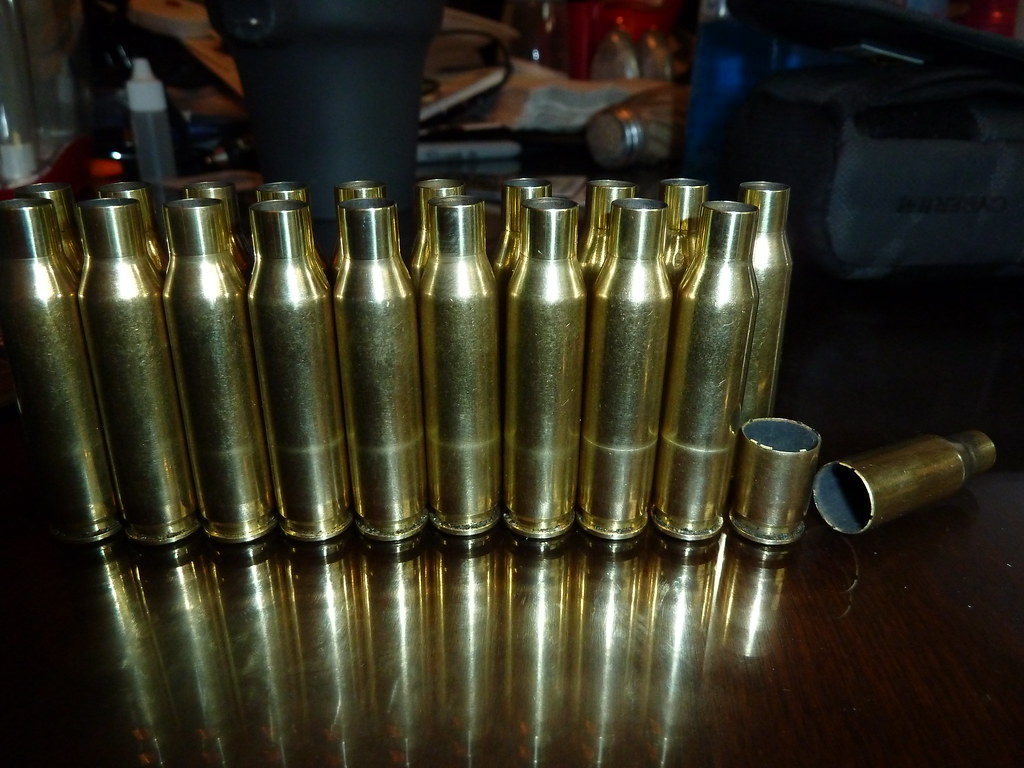I fired a round yesterday, and noticed smoke from around the bolt, it was difficlut to lift the bolt handle, then the case came out in two pieces (see picture below). This was not a hot load, 7mm-08, 150gr SMK, 42gr Alliant 2000-MR, Fed-210 primer, 2.800-OAL, Remington brass, chronographed at 2,634fps. When I went home, I examined the brass, it looked like it had been cut in half with a band-saw. I looked at the rest of this lot of brass. It's not new brass, it started out as factory ammo, and has been fired and reloaded six or seven times. Out of a hundred pieces, I found about twenty that had a visible ring of discoloration at about the same point where the seperation occured. I've been reloading almost thirty years now, and have never encountered this before, what is it?



